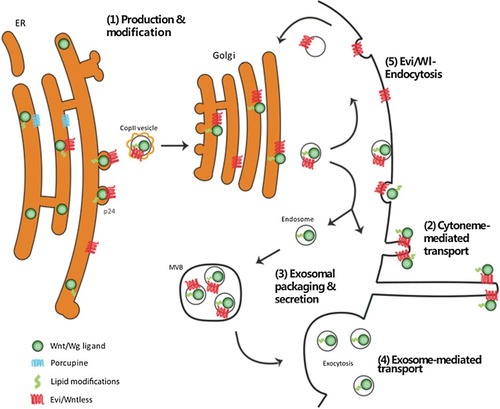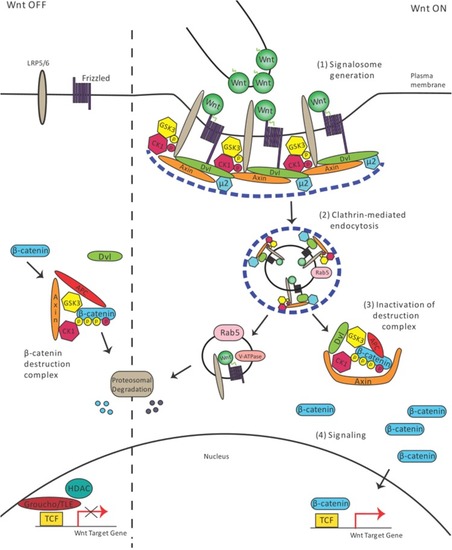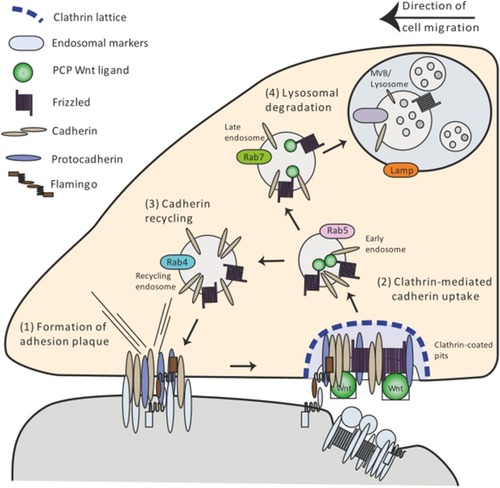- Title
-
The function of endocytosis in Wnt signaling.
- Authors
- Brunt, L., Scholpp, S.
- Source
- Full text @ Cell. Mol. Life Sci.
|
Endocytosis-regulated Wnt/Wg secretion. After formation and lipid modification of the ligand (1), Evi/Wl transports Wnt/Wg to the plasma membrane. The ligand induces either a cytoneme (2) or it gets re-endocytosed and packaged in exosomes (3) for the subsequent secretion (4). Re-endocytosis and transport of Evi/Wl to the Golgi close the loop (5) |
|
Endocytosis mechanism essential for Wnt/β-catenin signaling. In the Wnt off state, β-catenin is continuously degraded. Wnt presentation to the receiving cell leads to signalosome formation (1). The signalosome is taken up into the cell (2). Disassembly of the Clathrin lattice (blue dashed line) leads to separation of the endocytic vesicles carrying the ligand and the β-catenin/destruction complex, which becomes deactivated (3). Next, β-catenin accumulates and starts to regulate the transcription program in the nucleus (4) |
|
PCP signaling-regulated cell migration by endocytosis of adhesion plaques. Adhesion plaques serve as anchors to neighboring cells or substrates (1). Noncanonical Wnt signaling activates the internalization of the plaque components cadherin and protocadherin, predominantly in the rear of the cell (2). Cadherins are routed through the endocytic pathway from Rab5 early endosomes to Rab4/11 recycling endosomes (3). This allows for the assembly of new anchor points at the front of the cell. Cadherins are also routed for degradation to Rab7-positive endosomes and Lamp1 lysosomes (4). The differential rate between recycling and degradation determines the amount of Cadherin available for adhesion |



